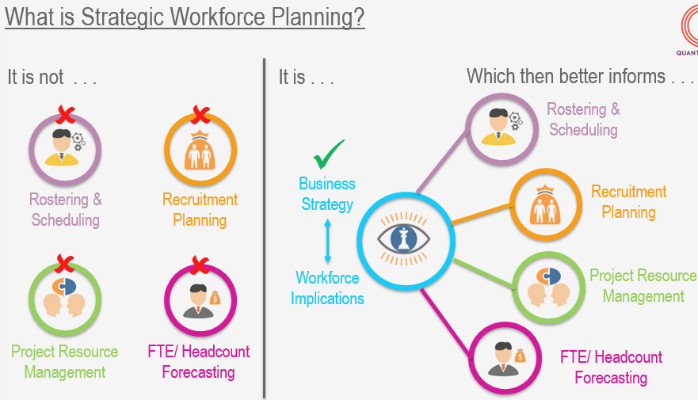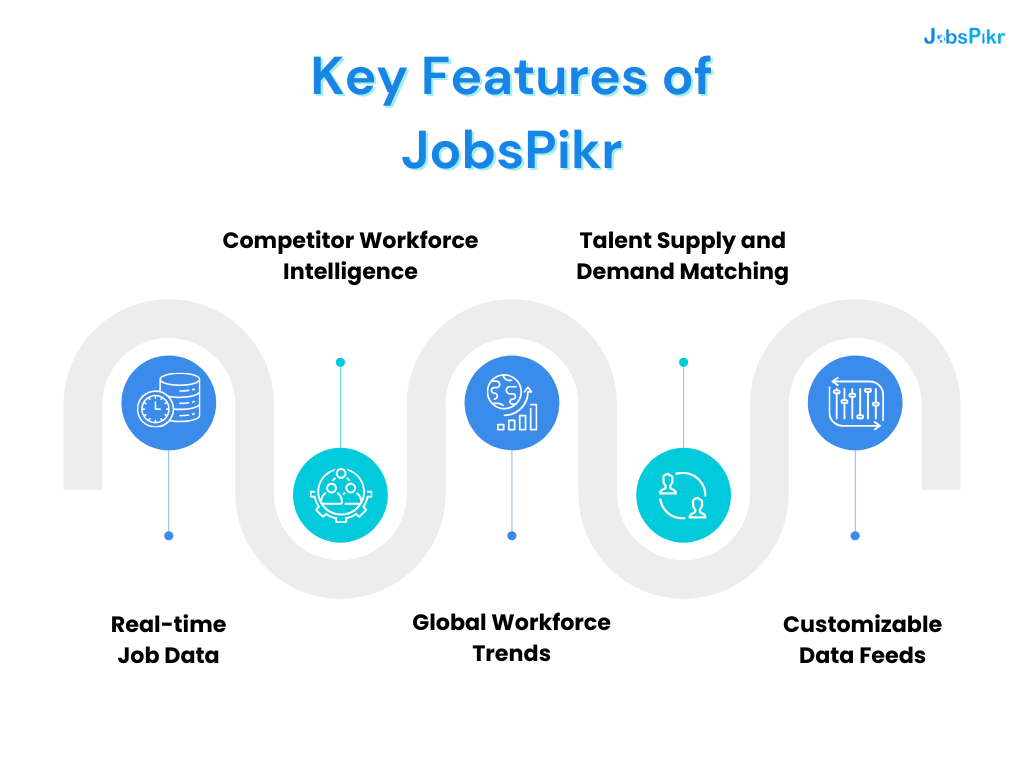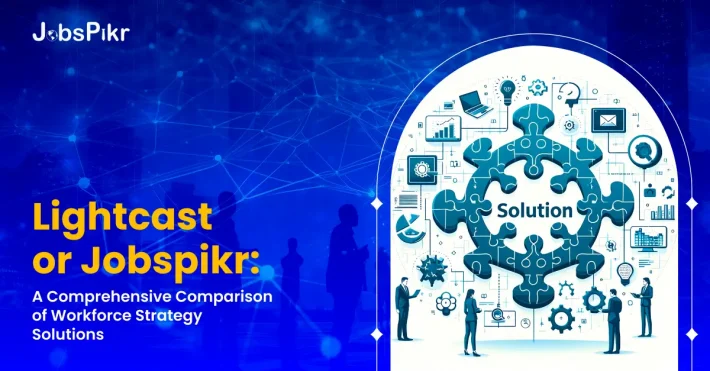Organizations are continuously looking for ways to better understand workforce trends, talent availability, and optimize their hiring strategies. Two prominent solutions in this space are Lightcast and JobsPikr. These platforms provide businesses with critical data for workforce analysis, helping them make informed decisions when it comes to talent acquisition, management, and retention.
In this article, we will explore how Lightcast and JobsPikr stack up against each other in the realm of workforce strategy solutions, examining their strengths, features, and the ways they can enhance workforce planning.
Importance of Workforce Strategy and Analysis in Today’s Market

Image Source: LinkedIn
Before diving into the comparison, it’s important to understand what we mean by workforce strategy and workforce analysis. Workforce strategy refers to a company’s plan for aligning its human resources with its business goals, ensuring that it has the right people in the right positions at the right time. Workforce analysis, on the other hand, involves examining employee data, market trends, and labor availability to make informed decisions about hiring, retention, and workforce development.
Both Lightcast and JobsPikr offer powerful tools for workforce analysis, enabling HR teams to stay ahead of talent trends, anticipate shortages, and craft workforce strategies that are both proactive and data-driven.
What is Lightcast?
Lightcast is a well-known provider of labor market analytics, offering businesses, educational institutions, and government agencies data-driven insights to help them understand labor trends. Lightcast data is designed to illuminate the gaps between labor market supply and demand, providing detailed intelligence on workforce patterns, and emerging job roles.
Some of the key features of Lightcast include:
- Comprehensive Labor Market Data: Lightcast collects and analyzes data from millions of job postings, government labor statistics, and other sources, offering a complete picture of current job market trends.
- Workforce Demand Forecasting: With Lightcast’s predictive analytics, HR departments can forecast demand for specific skills and job roles in the near future.
- Regional Workforce Insights: The platform enables businesses to get granular data about specific regions or cities, helping them tailor their workforce strategy to local conditions.
While Lightcast is strong in providing macro-level labor market insights, its focus is broader, serving not just businesses but also educational institutions and governments. It excels at providing high-level labor trends and demand forecasts, making it a good fit for organizations needing detailed, long-term workforce analysis.
JobsPikr: A Cutting-Edge Job Market Intelligence Platform
JobsPikr, on the other hand, is a relatively newer player in the workforce analytics space, but it brings a more focused approach to the corporate sector, particularly in workforce planning and talent acquisition. It is a data platform that specializes in job market intelligence by aggregating data from millions of job postings from across the globe, making it a crucial tool for businesses that want to stay agile in today’s fast-changing job market.
Here are some of key features of JobsPikr include:

- Real-time Job Data: JobsPikr’s strength lies in its ability to offer real-time data from global job listings, giving businesses up-to-date insights into the current hiring landscape.
- Competitor Workforce Intelligence: JobsPikr enables organizations to analyze their competitors’ hiring patterns, helping them understand industry trends and adjust their recruitment strategies accordingly.
- Global Workforce Trends: JobsPikr provides businesses with international labor market data, which is particularly beneficial for companies operating in multiple regions.
- Talent Supply and Demand Matching: The platform helps HR departments match talent supply to organizational demand by tracking workforce availability across different markets.
- Customizable Data Feeds: JobsPikr allows users to tailor their data feed based on specific industries, job roles, or geographic regions, enabling a more focused approach to workforce strategy.
- Skills Gap Analysis: JobsPikr data also helps organizations identify skill shortages in the market, enabling them to adjust their talent acquisition and development strategies accordingly.
Unlike Lightcast, which tends to focus on broader labor market trends, JobsPikr is more tuned to the tactical needs of HR departments and recruiters who require timely, actionable insights into job market conditions. Its focus on real-time job data makes it especially useful for organizations that need to respond quickly to labor market fluctuations.
Lightcast vs JobsPikr: Key Differences and Benefits
1. Target Audience and Industry Focus
- Lightcast: While Lightcast serves corporate HR departments, it also has a strong presence in academia and government sectors. Its tools are designed for large-scale workforce analysis, making it ideal for organizations that need to understand broad labor trends and long-term workforce planning.
- JobsPikr: JobsPikr is geared more towards businesses and recruitment agencies that need real-time job market data. It focuses on practical, day-to-day workforce strategy, offering insights that help HR departments with immediate hiring needs and short-term workforce planning.
2. Data Insights and Customization
- Lightcast data is highly detailed and offers a macro perspective on labor market trends. It is excellent for organizations that want to do a deep dive into skills gaps, regional workforce data, and labor demand forecasting. However, it is less focused on real-time job postings and more on historical trends.
- JobsPikr stands out with its ability to deliver real-time job market data from global job postings. It provides customizable data feeds, which is beneficial for companies that want to tailor insights to specific industries, roles, or locations.
3. Regional and Global Insights
- Lightcast offers regional labor market insights, making it ideal for organizations that need to understand specific local conditions, whether in the U.S. or internationally.
- JobsPikr excels in providing global workforce data, which is particularly valuable for multinational corporations or companies looking to expand into new markets. It tracks job postings across countries, giving businesses a better understanding of talent availability worldwide.
4. Workforce Demand Forecasting
- Lightcast offers highly sophisticated forecasting tools, which are essential for organizations that want to anticipate future talent needs or understand how economic trends will affect labor supply and demand in the coming years.
- JobsPikr, while not as focused on long-term forecasting, provides more real-time insights into job demand and supply. Its focus is on current market conditions, helping businesses adjust to immediate changes in hiring patterns.
5. Competitor Insights
- Lightcast provides broad industry insights but doesn’t focus as much on tracking competitors’ workforce strategies.
- JobsPikr allows businesses to track their competitors’ hiring activities, providing invaluable intelligence into what skills are being sought after in the industry and by whom. This feature is particularly useful for companies looking to stay competitive in talent acquisition.
Choosing the Right Workforce Strategy Solution for your Needs
When deciding between Lightcast and JobsPikr, the best choice depends on your organization’s specific needs.
- Lightcast is the better option for companies looking for comprehensive labor market insights and long-term workforce planning. If your organization is focused on understanding broad economic trends, skills gaps, and regional labor availability, Lightcast data will provide the depth of information needed for strategic decision-making.
- JobsPikr, on the other hand, is ideal for businesses that require real-time job data and competitive insights. If you are looking for a workforce strategy solution that helps you stay nimble and react quickly to changes in the job market, JobsPikr is an excellent choice. Its focus on actionable, current data makes it a great tool for companies with immediate hiring needs.
Conclusion
Both Lightcast and JobsPikr offer valuable solutions for enhancing workforce strategy, but they serve slightly different purposes. Lightcast is best suited for organizations seeking in-depth labor market analysis and long-term workforce planning, while JobsPikr is designed for businesses that need real-time insights into job market trends and competitor hiring activities.Ultimately, the right choice will depend on whether your organization prioritizes predictive workforce planning or immediate, data-driven recruitment strategies. Either way, both platforms offer the data and tools needed to create a more informed, agile workforce strategy that aligns with business goals. Sign up today!




